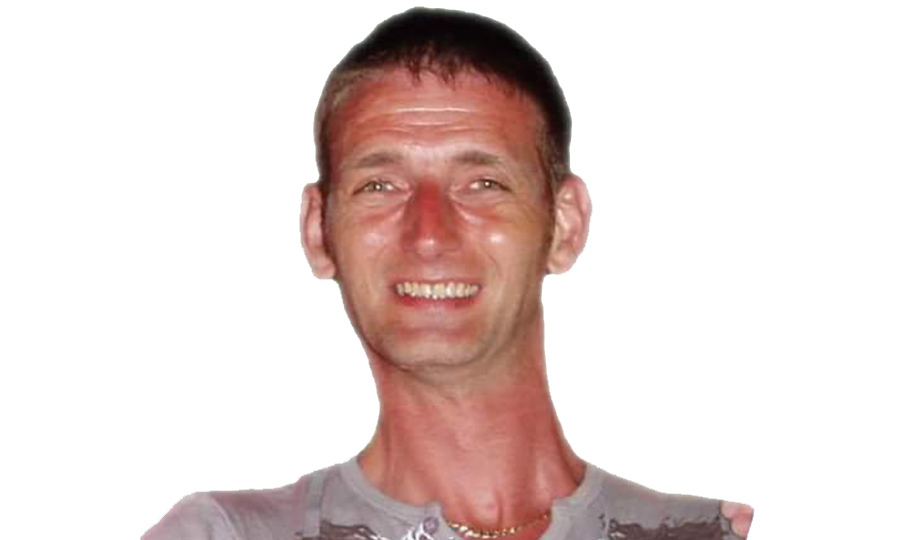
THE family of a man found dead in his van days after police were first alerted to concerns about the vehicle say they hope “valuable lessons” have been learned after an official report identified failings in the force’s response.
David Penman, 46, was found dead in his works van, which was parked in a lay-by on a quiet country road in Dunipace, near Falkirk, on Thursday December 15 last year.
Police discovered him slumped in the driver’s seat, having died from carbon monoxide poisoning. There were no suspicious circumstances.
A police watchdog investigation found it took three separate calls to a control room on three separate days before officers attended and made the discovery.
The Police Investigations & Review Commissioner (Pirc) found there were clear inconsistencies in how the force’s Area Control Room (ACR) at Bilston Glen dealt with the reports and said important lessons must be learned.
Commissioner Kate Frame said it cannot be determined whether Mr Penman, who had suffered bouts of depression, would have lived if police had acted sooner.
She has sent her recommendations to the Chief Constable.
The Bilston Glen centre was previously criticised following the deaths of John Yuill and Lamara Bell in July 2015. The couple lay undiscovered for days after a crash on the M9 near Stirling despite a sighting of their wrecked car being reported to the control room.
The watchdog probe reveals that Mr Penman’s van was spotted on Old Northfield Road by a local resident on Tuesday December 13. He contacted police with concerns the vehicle may have been stolen as he had seen it parked there three days earlier.
A computer check by staff at the ACR found that the vehicle was not stolen, was taxed and insured and was owned by a company in Stirling and a police officer closed the incident.
Another member of the public called Bilston Glen the next day, reporting similar concerns, but the report was dealt with by the same officer and no further action was taken.
A third call was made by another person at about 7am on Thursday December 15 about a lorry in the area. Officers, who were dispatched to the scene at about 11am, were unable to find the lorry but came across Mr Penman’s van around 50 minutes later.
Pirc found “clear anomalies” in how the control room dealt with the three reports.
The first two were graded as “priority four”, which should have attracted a scheduled police attendance. The last call was graded as “priority two”, which actually required officers to be sent out within 15 minutes.
The report said it would have been reasonable for ACR staff to contact the vehicle’s owners and either undertake or instruct some form of additional enquiry.
“Had they done so, then concerns about the man’s ongoing depression and welfare may have been discovered and a more informed decision taken about the need for officers to investigate further,” it said.
Pirc recommends that Police Scotland adopts a “flexible and practical” approach to reports of abandoned or suspicious vehicles and examines all of the circumstances before deciding whether or not to carry out further enquiries.
Ms Frame said: “It would be unrealistic to expect the police to investigate each report of an abandoned vehicle.
“However, in this case had the repeated concerns expressed by members of the public been acted on earlier, additional information would have been available which may have prompted officers to locate and search the van in the lay-by sooner.
“While it cannot be determined that if police had acted when the deceased’s vehicle was first reported, he would have been found alive, there are important lessons to be learned in how police deal with similar incidents in the future.”
In a statement issued via Pirc, Mr Penman’s family said it has been very difficult for them to come to terms with the death of the “loving father, son and brother”.
“We are aware of the Pirc report and its findings and we feel that it has provided us with some of the answers we were looking for,” they said.
“We will never know for sure whether David would still be alive if more prompt action had been taken initially but we are pleased to note the recommendations in the report.
“We hope that Police Scotland will take these recommendations on board and that valuable lessons have been learned.”

Enjoy the convenience of having The Sunday Post delivered as a digital ePaper straight to your smartphone, tablet or computer.
Subscribe for only £5.49 a month and enjoy all the benefits of the printed paper as a digital replica.
Subscribe